Did you get 2% of a region on your DNA results? If you want to learn how you may have inherited this region, how far back to look for your ancestor, and how to trace it, this article is for you.
Most of us are surprised about our 2% regions, which are also sometimes referred to as “trace regions”. Trace ethnicity or ancestry regions are regions that we inherited in small amounts, usually from 1-3%.
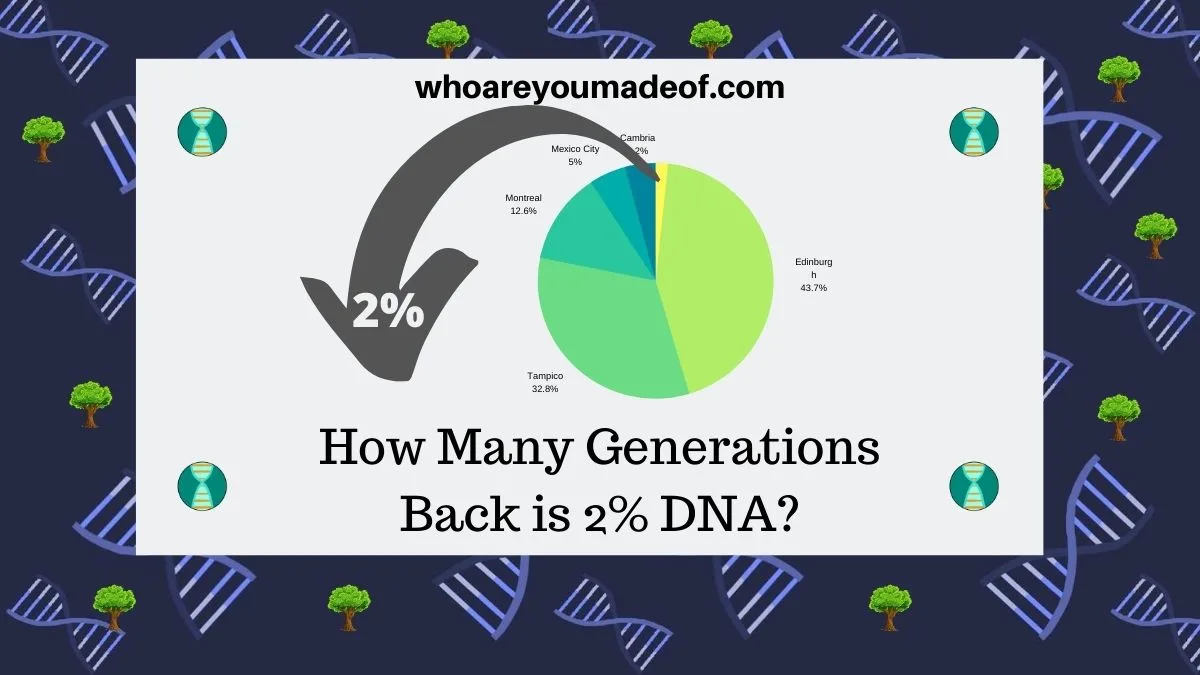
My daughter did her DNA and found that she had 2% of her DNA matching the Norway, European Jewish, Mali, and Sweden regions. Your 2% regions can be from any of the regions tested for by your DNA testing company.
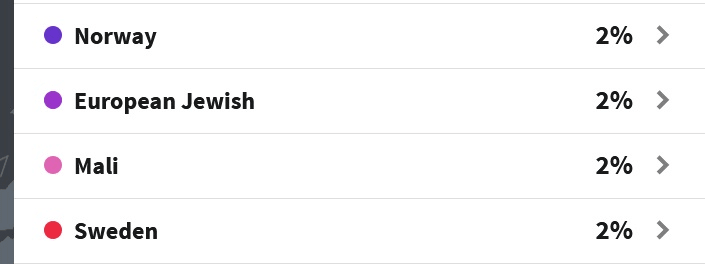
One of the first questions most people wonder about when they see their 2% region is how many generations they need to look in their family tree in order to locate the ancestor who passed this region down to them.
My daughter had these same questions, and she also wanted to know whether it would be possible to identify the exact ancestors from whom she inherited this DNA.
Let’s dig into this topic, shall we?
How far back in tree is ancestor who passed down 2% DNA?
There is a general “rule of thumb” that we can apply when determining how far back our DNA results can take us. We need to look in our family tree to find the ancestor who passed down our 2% DNA region.
This general rule is based on the pattern of autosomal DNA inheritance where 50% of each parent’s DNA is passed down to their offspring.
The reason that only 50% of a person’s DNA is passed down to their child is a result of a process called recombination. Every human has two copies of their numbered chromosomes.
These two copies of each chromosome go through through the recombination process, where “pieces” of each copy of the chromosome are randomly selected to create a brand-new, 100% unique chromosome for the child.
If we assume that an ancestor had 100% of the DNA region in question (like Norway, for example), we can assume that they passed 50% of this region down to all of their children. Their grandchild should have inherited about 25% DNA matching the Norway region, assuming that none of their other ancestors also had ancestry in Norway.
If we continue to divide the percentage of Norway DNA in half each generation, we might expect to see a great-great-great-great grandchild of the 100% Norwegian ancestor inherit about 2% DNA that matches the Norway region.
The chart below is a visualization of how many generations back we need to go to find the “100% ancestor” based on the percentage of DNA we see in our results using our basic rule of thumb.
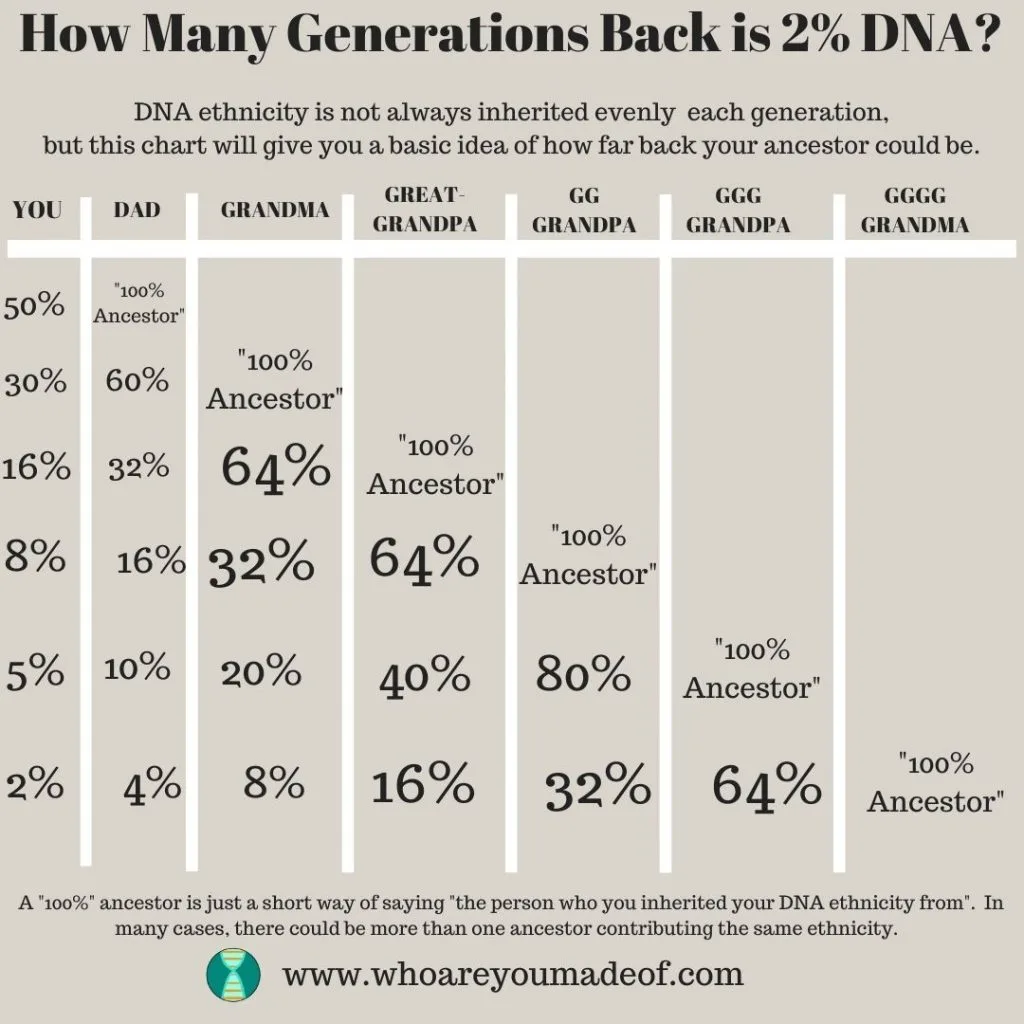
As you can see, if we inherit 2% of our DNA from a particular region, we should be looking at least as far back as a great-great-great-great grandparent in order to identify the source of our DNA from that region.
It’s entirely possibly to inherit DNA in even, 50% increments each generation. However, as I mentioned above, DNA for the recombination process is randomly selected.
This means that sometimes we might inherit more (or less) than 50% of a region. We could inherit all of the DNA that matches a particular region, or even inherit none at all, especially when it comes to more distant ancestors.
Ethnicity is not always inherited in equal portions
Ethnicity regions are not always passed down in equal portions. This is especially true as generations pass and our ancestor becomes more distant in our family tree.
If our parents have 100% of their ancestry in a particular region, we will always inherit 50% of that region. For example, if a person has a parent who is 100% Native American and 100% European Jewish, their DNA results should show about 50% of their DNA to match each region.
When it comes to more distant ancestors, like great-grandparents, we will find that we may not have inherited exactly 12.5% (the amount we might expect) of their DNA.
Instead, we may have inherited a little more, or a little less.
The chart below shows how DNA can be randomly selected and passed down, and how this can affect the ethnicity regions on someone’s DNA results.
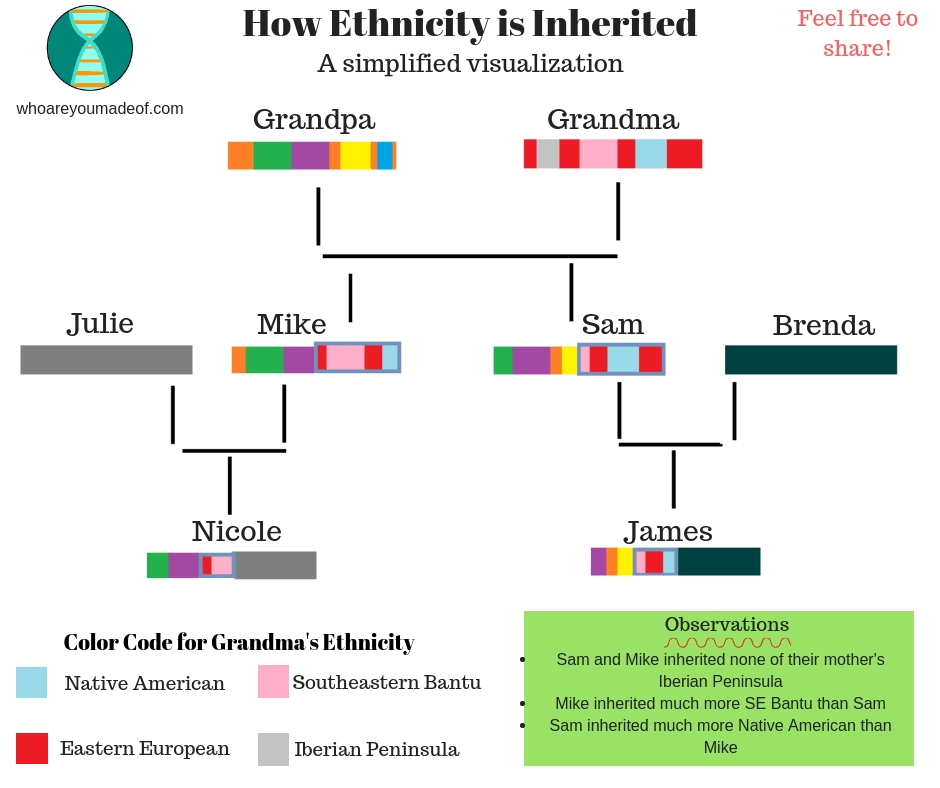
The result of the random recombination process is that the further our ancestor is back in our tree, the more likely it is that we only inherited a small portion of their DNA.
The rule of thumb that I mentioned towards the beginning of this article should only be viewed as a clue as to where we should look in our tree for our ancestor. In reality, the ancestor could be a generation or two more closely related, or a few generations further back.
How to trace 2% DNA ancestor
I sincerely hope that you are interested in learning how you inherited your 2% DNA that matches the region that surprises you. Regions in our DNA results that surprise us are usually the most fun aspect of DNA results.
The first thing that you should do, if you haven’t already, is start building your family tree. This is the most important aspect of getting the most from your DNA results.
If you haven’t yet started building a tree and you don’t know where to start, you might consider my softcover book on Amazon, Family Tree Building Basics: A Book for Beginners, which is also available via immediate PDF download.
By building your family tree back a few generations, you might find the likely source of your 2% DNA region.
For example, if you find 2% Indigenous Americas DNA on Ancestry, and build your tree back a few generations and find that you have ancestry going back hundreds of years in what is now Arizona, you might have found the branch of your tree with the source of your Native American DNA.
Aside from building your family tree, there are a few strategies that you can take to try to learn more about your DNA that matches the 2% region. The following posts dive deeper into the topic of tracing a particular region:
- Is a 1% Ethnicity Region Always Just Noise?
- How to Analyze Your DNA Results: Focus on Ethnicity Estimate
- How to Find Out Which Ancestry You Inherited From a Great-grandparent
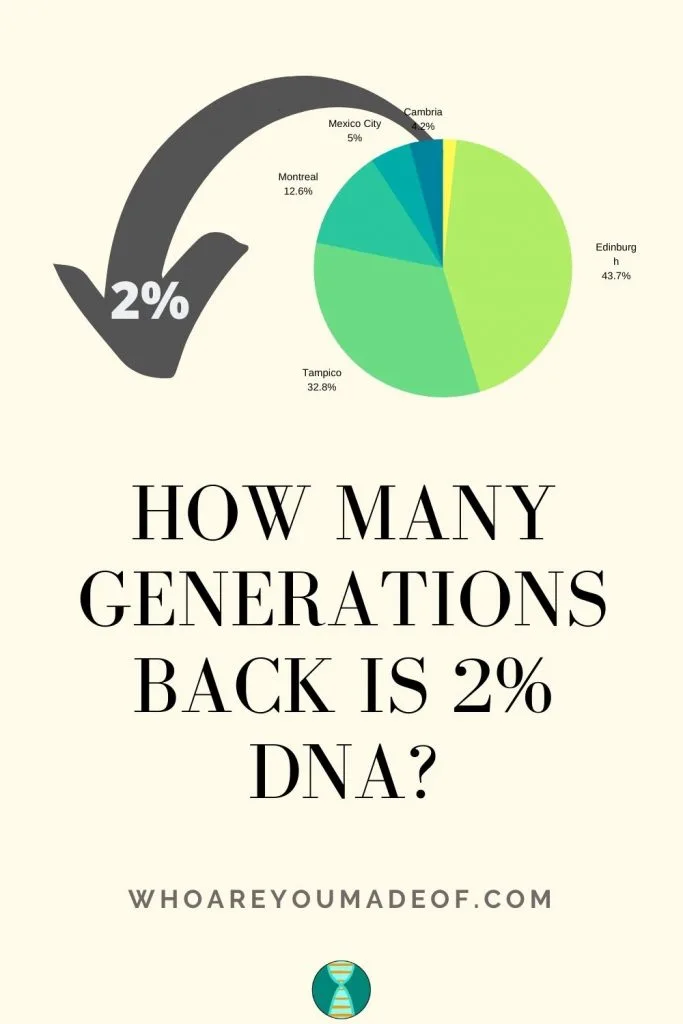
Conclusion
I hope that this article has helped you learn more about how you may have inherited your 1% DNA region, how far back your “100% ancestor” might be, as well as how to trace this region.
If you have any questions about something that you read in this post, or if you would like to ask a specific question about one of your 1% regions, I would love for you to join us in the discussion below.
Thanks for stopping by!


Erin
Sunday 17th of September 2023
I've always wondered why 2% or small amounts of a particular ethnicity has to stem from a 100% ancestor. Couldn't someone inherit a small amount of ethnicity from a parent or grandparent etc that had that small amount? I inherited 5% Baltic from my mother who is scandinavian *70% Swede/Danish, 25% Norwegian, 5% Baltic (according to Ancestry testing). She actually has 5% Baltic too, so must have passed all of her Baltic down to me. It's all an estimate I realize, but I just don't get how there has to be someone that had 100% of something to start with. I'm probably not sounding very clear.
Mercedes
Sunday 17th of September 2023
Hi Erin! Thank you so much for your comment. You are absolutely correct in your logic about the "100% ancestor" question. We can definitely inherit the entire small percentage that our recent ancestors may have had that corresponded to a particular region. In the case of your Baltic ancestry, it is most likely that eventually - if you kept going back in your family tree far enough - you would arrive at a place where your ancestors were from a Baltic country, and thus the "100% ancestors" that we think of when we research those small percentages. Those small percentages can get passed down for a long time, but at some point we usually did have ancestors living in that region, and while they may not have really been "100%" of that DNA, their DNA would match that region at a very high percentage. Thank you for your great comment!
helen blaufarb
Monday 5th of June 2023
My DNA shows that I am 98% ashkenazi Jew and 2% Yemeni. How could this be possible! Brought up in England
Paul
Monday 22nd of May 2023
I see a 3% Levant description in my DNA results. Is there a way to get a more specific country designation? Haven't been able to find a specific ancestor from the region.
Tracey Anne OBrien
Wednesday 9th of November 2022
My mother did a DNA test with Myheritage and it came back with 1,5% Native American which considering that my mother was born in 1948 must have come from an ancestor from somewhere in the late 1700s or early 1800s. My mother has very mixed ancestry from a South Asian father to a maternal great grandfather whose ancestors were slaves brought to The Americas and later to Jamaica, On the other maternal side she has English, Scandanavian , Baltic and a few others that go back to about 1600. I have done a family tree but in some branches have come to a brick wall in The South Asian, African and one side of the English one which stops at 1857, So far they all seem to have English, Irish or Indian surnames but looking at the DNA results some must have come from other parts of Europe. I decided to go one step further on the Native American side and put her DNA through a more advanced site that deals in Native American DNA, I was very surprised with the results as it turns out she has about 14 different tribes ranging from The Inuit and Cree in Northern Canada all the way to California, North Carolina (The Lumbee) lots of Mexican tribes, all the way down to Brazil, Peru (Titicaca and the Amazonian tribes) and Tierra del Fuego, Taino and Puerto Rican,Some of them quite famous ones too. I ask myself how come she can have so many tribes from so many parts of America and are they related through her Asian, Siberian, Oceanic or Spanish ancestors? I have lots of theories but no real answers . Did the Spanish conquistadores mix with the natives or did one of my Jamaican ancestors hook up with a Taino as the islands are pretty close. Is it a man or a woman?? So many unsanswered questions.
darlene wynn
Friday 26th of August 2022
Are you receiving this email? If so, I have q question.